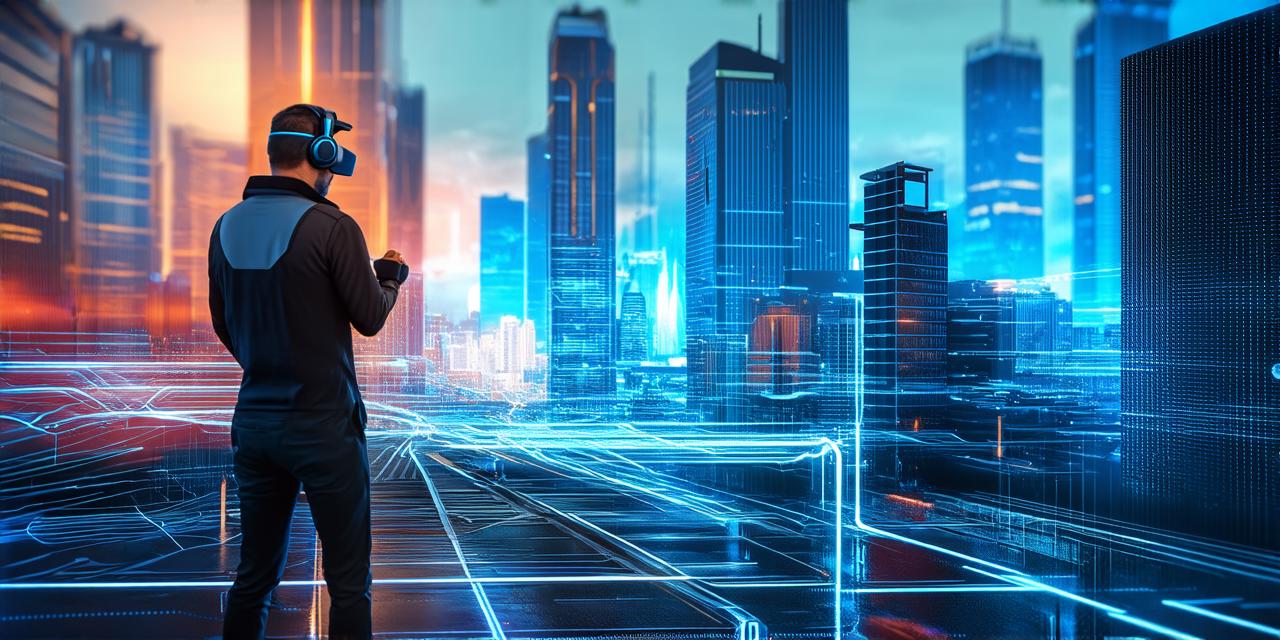Virtual Reality (VR) and Augmented Reality (AR) are transforming industries across the board. From healthcare to retail, these technologies are revolutionizing the way we interact with our environment and each other.
What is VR AR Development?
Virtual Reality (VR) and Augmented Reality (AR) are immersive technologies that allow users to interact with a virtual environment or overlay digital information onto the real world. VR creates a fully immersive experience, while AR enhances the user’s physical environment with digital elements. Both technologies have the potential to revolutionize businesses by providing new ways for customers to engage with products and services.
The Benefits of VR AR Development Services
-
Enhanced Customer Experience: VR and AR development services can provide an unparalleled customer experience. By allowing users to interact with virtual environments or overlay digital information onto the real world, businesses can create more engaging and memorable experiences for their customers.
-
Increased Productivity: VR and AR development services can help businesses increase productivity by providing new ways for employees to interact with products and processes. For example, in the manufacturing industry, VR can be used to simulate production processes, allowing employees to test new methods before they are implemented on the factory floor.
-
Improved Training: VR and AR development services can provide an effective way for businesses to train their employees. By using immersive technologies, employees can experience real-world scenarios in a safe and controlled environment, allowing them to develop the skills they need to perform their jobs more effectively.
-
Reduced Costs: VR and AR development services can help businesses reduce costs by providing new ways for employees to interact with products and processes. For example, in the healthcare industry, VR can be used to simulate surgeries, allowing doctors to practice without the need for expensive equipment or specialized facilities.
-
Increased Accessibility: VR and AR development services can help businesses increase accessibility by providing new ways for customers to interact with products and services. For example, in the retail industry, AR can be used to create virtual try-on experiences, allowing customers to see how products would look on them before making a purchase.
Case Studies: How Businesses are Using VR AR Development Services
-
IKEA: IKEA is using VR technology to allow customers to visualize furniture in their homes before making a purchase. This has led to increased sales and customer satisfaction, as customers can see exactly how the furniture will look in their space before they buy it.
-
Toyota: Toyota is using AR technology to allow employees to simulate production processes in real-time. This has helped the company reduce costs and increase efficiency by allowing employees to identify potential issues before they arise on the factory floor. The company has also used VR to train employees on new production methods, allowing them to practice in a safe and controlled environment.
-
L’Oreal: L’Oreal is using VR technology to allow customers to try out makeup products virtually. This has led to increased sales and customer satisfaction, as customers can see how the products will look on their skin before making a purchase. The company has also used AR to create virtual try-on experiences in physical stores, allowing customers to see how products would look on them in real-time.
-
McDonald’s: McDonald’s is using AR technology to allow employees to visualize food preparation processes in real-time. This has helped the company reduce costs and increase efficiency by allowing employees to identify potential issues before they arise in the kitchen. The company has also used VR to train employees on new production methods, allowing them to practice in a safe and controlled environment.
FAQs: Answering Your Questions About VR AR Development Services
Q: What is the difference between VR and AR?
A: VR creates a fully immersive experience, while AR enhances the user’s physical environment with digital elements. VR typically requires specialized equipment such as headsets or goggles, while AR can be experienced through a smartphone or tablet.
Q: How do VR and AR development services benefit businesses?
A: VR and AR development services can provide businesses with new ways to engage with customers and employees.
